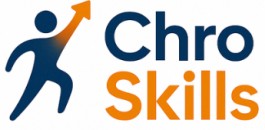
Understanding the Role of a Chief Human Resources Officer
Decoding the CHRO Function in a Business Framework
Within an organization, the role of a Chief Human Resources Officer (CHRO) has evolved beyond traditional boundaries, becoming integral to high-level strategizing and organizational growth. CHROs are essential players who must not only understand the dynamics of human capital but also guide the alignment of HR strategies with broader business goals. Their leadership signifies the juncture where employee development meets business strategy, ensuring that each employee’s skills and contributions drive the organization towards shared objectives.
The complexity of the CHRO role involves overseeing various HR practices like employee training and analyzing skill gaps. Their work involves collaborating with departmental leaders to cultivate leadership within the ranks and implement effective training programs that cater to evolving business needs.
As a nexus for talent management, CHROs must ensure that their team can proficiently identify and close skill gaps. Utilizing tools like a training matrix or skills matrix is crucial for tracking training progress and employee development while meeting compliance and training requirements. By integrating a well-structured skills matrix, CHROs can adeptly map out training courses, align job roles with required skills, and ensure employees are adequately prepared to meet future demands.
A proficient CHRO also takes charge of overseeing the implementation of matrix training strategies, ensuring that training programs are both comprehensive and customized to push forward the strategic initiatives of the organization. With a steadfast focus on developing job role competencies, CHROs can maintain the agility needed to drive organizational success in an ever-changing business landscape.
The Importance of a Training Matrix in HR
Utilizing Training Matrices to Elevate HR Functions
A training matrix serves as a methodical tool to enhance the HR functions within an organization. By adopting a comprehensive training matrix, HR leaders can effectively track and evaluate employee development, ensure compliance, and align training programs with organizational goals. To begin crafting this matrix, it's vital to identify the requirements of each job role. This means pinpointing the skills needed for particular roles within the organization. Doing so aids in recognizing skill gaps and creating targeted employee training plans. By mapping these required skills against existing competencies, HR departments are better equipped to support effective training development. Moreover, the training matrix ensures continuous monitoring of employee progress. By tracking the advancement in skills training, organizations can ensure that employees meet both current and future job requirements. This approach allows for identifying any training gaps early and provides a clear understanding of where additional training courses are necessary. Incorporating a skills matrix is also essential to ensure compliance with industry standards and regulations. By meticulously organizing training requirements and ensuring all necessary courses are fulfilled, HR leaders can uphold compliance standards more efficiently. Overall, this type of structured approach provides clarity, maximizes employee potential, and aligns job roles with organizational objectives. For insights into setting effective leadership goals that align with training and development strategies, visit setting effective leadership goals for chief human resources officers.Key Skills for Effective HR Leadership
Essential Competencies for HR Leaders
The role of a Chief Human Resources Officer (CHRO) requires an expansive skill set to effectively steer an organization's HR strategy. To meet the evolving demands of this position, a comprehensive understanding of training requirements and skill development is paramount. This not only helps identify the critical skill gaps but also aligns employee progress with organizational goals. Successful HR leaders must harness a combination of technical and interpersonal competencies, enabling them to navigate complex job roles and foster an inclusive work environment. Here are some key skills required for effective HR leadership:- Strategic Thinking: CHROs need to develop a long-term vision and integrated HR strategies that support business objectives. Creating a matrix training approach allows HR leaders to track employee training progress and ensure compliance with training requirements.
- Communication and Influence: Effective HR leaders must bridge communication gaps and influence various stakeholders, from entry-level employees to senior executives. Employee training often requires the ability to convey complex information simply and persuasively.
- Analytical Skills: The ability to analyze data and identify trends is vital for a CHRO. This helps in tracking skills competencies across the organization and creating targeted training programs to address specific skill gaps.
- Adaptability and Change Management: Ensuring smooth transitions during organizational changes is crucial. With the implementation of a skills training matrix, HR leaders can track training progress and adapt strategies to meet shifting business needs.
- Leadership Development: Developing future leaders within the organization is a significant aspect of the CHRO role. For insights into effective leadership skills, one can refer to enhancing leadership through project cycle management training.
Developing a Customized Training Matrix
Crafting a Tailored Training Approach
Developing a customized training matrix is an essential strategy to boost the skills and competencies of employees within an organization. The process begins with identifying the specific job roles and the required skills each role demands. Understanding these requirements assists in effectively addressing skill gaps and aligning employee development with organizational goals. To create a training matrix that resonates with the needs of your workforce, consider the following steps:- Evaluate Current Skills and Competencies: Conduct a comprehensive analysis of the existing skills across various roles. This will help in sketching out the current capacities and identifying any skill gaps that may hinder job performance.
- Set Clear Training Objectives: Establish objectives that reflect both organizational goals and the personal development goals of each employee. Clear objectives ensure the training programs are goal-oriented and impactful.
- Design Tailored Training Programs: With objectives in place, develop training courses that cater to the unique needs of each job role. Tailoring content to meet specific requirements enhances the effectiveness of skills training.
- Integrate Compliance and Standardization: Ensure that all training development adheres to compliance standards. This not only upholds organizational integrity but also guarantees that employees receive standardized quality in skill development.
- Utilize a Matrix Template: A skills matrix or training matrix template can provide a structured framework for tracking progress and compliance. These templates help in visualizing the relationship between required skills and current employee aptitudes.
Implementing the Training Matrix in HR Strategy
Integrating the Training Matrix into HR Strategy
Implementing a training matrix within an organization requires a strategic approach to ensure it aligns with the overall HR goals. The matrix serves as a roadmap for identifying skill gaps and tracking employee progress, making it a vital tool for HR leadership.
To effectively integrate the training matrix into your HR strategy, consider the following steps:
- Identify Training Requirements: Begin by assessing the required skills for each job role within the organization. This involves understanding the specific competencies needed for employees to excel in their roles.
- Create a Skills Matrix: Develop a comprehensive skills matrix that maps out the current skills of employees against the required skills. This helps in identifying gaps and prioritizing training programs.
- Customize Training Programs: Tailor training courses to address the identified skill gaps. Ensure that the training development is aligned with the organization’s goals and compliance requirements.
- Track Training Progress: Use the matrix to monitor employee training progress. This helps in ensuring that employees are on track to meet their development goals and enhances the overall effectiveness of the training.
- Review and Adjust: Regularly review the training matrix to ensure it remains relevant to the evolving needs of the organization. Adjust the matrix as necessary to address new skill requirements or changes in job roles.
By embedding the training matrix into the HR strategy, organizations can foster a culture of continuous learning and development. This not only enhances employee skills but also supports the organization in achieving its strategic objectives.













